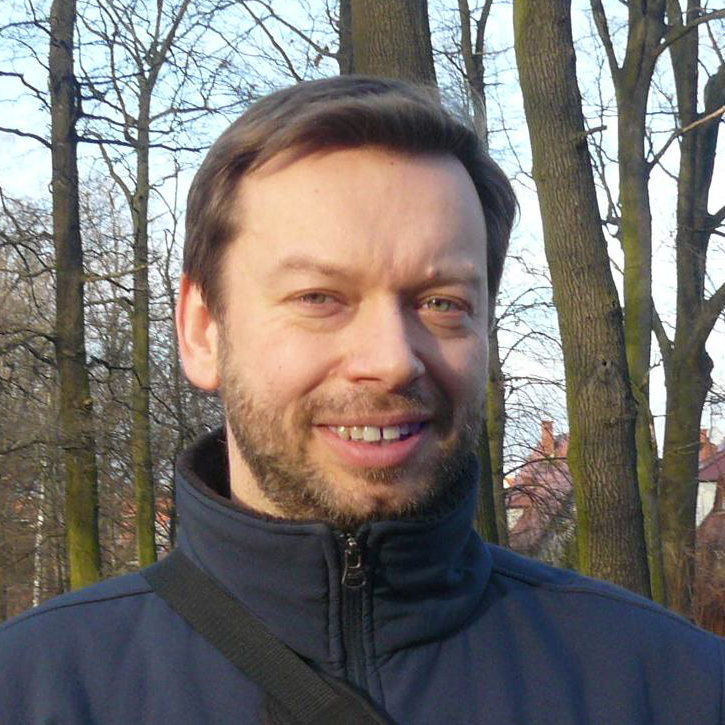- Andrzej Krajewski
The unification of Germany under Bismarck with the powerful France, Russia, and Great Britain in the neighbourhood; the start of World War I and World War II; or, more recently, the gamble with Putin's Russia to win cheap energy. Looking at the history of the last 150 years, Germany has made many risky, even gambling decisions, putting everything on the line. Playing “All-in”.
Each such attempt was motivated by the desire to improve its own status in Europe or even the world. Sometimes, as in Bismarck's time, Germany succeeded. More often, however, it ended in dismal defeat.
Despite its great domestic potential, which gave hope for achieving amazing feats, Germany was chronically cut off from the key foundation of any military or political campaign - abundant raw materials base, especially the sources of energy.
For this reason, the country's leaders often pinned their hopes on scientific and technological advances, to break from the material gridlock. Gunpowder made from synthetic ammonia, synthetic gasoline made from coal, or wonder weapons like the V1 and V2 rockets were supposed to break through German resource shortages and enemy manpower superiority.
Did they break through? Well, we all know history.
Meanwhile, today Germany is taking another big gamble, and again it's on energy resources. This time Berlin wants to bet on hydrogen, big time. Did the Germans find a new resourceful wunderwaffe?
Farewell to the nuclear
"We would like to know what motivated the federal government to abandon nuclear power in the midst of a crisis, despite the foreseeable inconveniences," Daniel Wetzel, economics editor of the Welt Group, announced on February 16, 2024, in the newspaper Die Welt. As, one of Germany's most respected journalists, he specializes in covering the energy industry.
Ten months earlier, on April 15, 2023, Germany's last three nuclear power plants - Isar 2 in Bavaria, Emsland in Lower Saxony, and Neckarwestheim 2 in Baden-Württemberg - were shut down. They remained fully operational and safe until the end of their lives, providing 6.5 percent of Germany's electricity, until the shutdown.

At the same time, unlike lignite or natural gas-fired power plants, nuclear reactors emitted no carbon dioxide or other greenhouse gases. On top of that, they were the cheapest source of electricity.
According to a report by the International Energy Agency, the cost of a kilowatt-hour of electricity generated by a nuclear power plant in the European Union in 2020 was 3 cents. Meanwhile, the same kilowatt-hour from an onshore wind farm already costs 6.1 cents, a photovoltaic panel 7 cents. And burdened by the cost of purchasing CO2 emission allowances, gas-fired and coal-fired power plants supply electricity at a price of 13.9 eurocents in case of gas, and as much as 17.6 eurocents for coal-fired plants.

It should be added that just two decades ago, Germany had 19 nuclear power plants in operation, providing up to one-third of the country's electricity. The German economy was even basking in cheap energy. Then they were all shut down. The last three at the end of the energy crisis. Never mind that thanks to Russia, which showed Berlin what energy blackmail was even before the invasion of Ukraine, gas prices rose up to six times. Now energy in Germany is hellishly expensive.

Self-inflicted injury?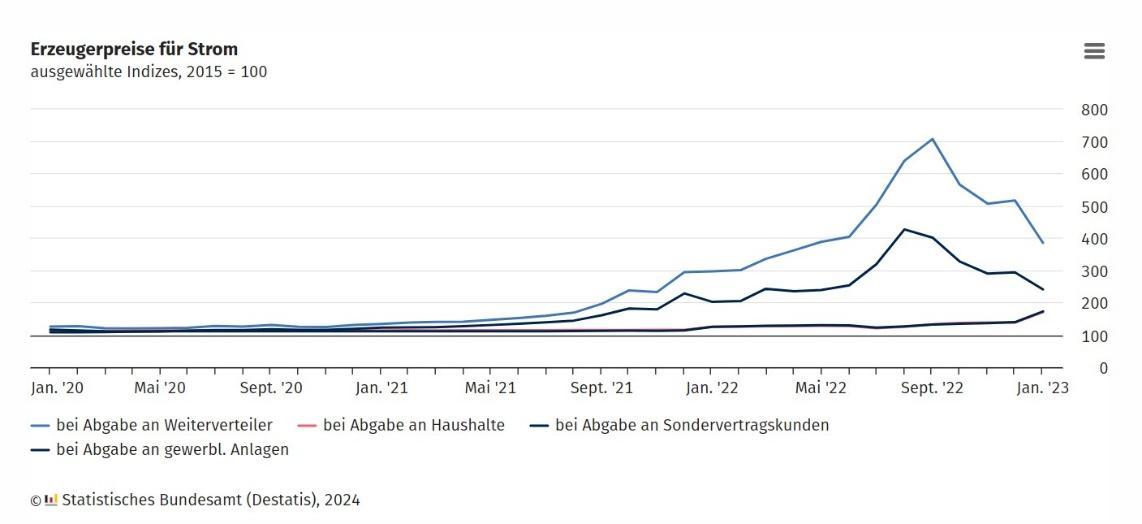
It is therefore not surprising that Daniel Wetzel, in an article published by Die Welt, complained that although natural gas prices have fallen and Germany buys sufficient quantities of the fuel from suppliers other than Russia, he said: "Germany still have a huge problem with energy costs. Industry is hardly investing any more, and companies are moving abroad. This also has to do with the nuclear phase-out in the middle of the energy crisis," he stressed. While explaining the mechanism of the German energy system, in which after the disappearance of nuclear power plants, their role was taken over by gas-fired power plants, which stabilize the supply of electricity to the grid due to the instability of renewables. For this reason, Wetzel emphasized, "expensive gas-fired power plants have to be commissioned earlier than before. Since then, Germany has been paying even more for electricity than before".
That's why Wetzel supported the efforts of journalists from the magazine Cicero who demanded that the Ministry of Economics and Climate Protection release internal documents to find out what the decision-making process looked like. The head of the ministry, Robert Habeck, refused. Cicero magazine then filed a lawsuit, citing the journalist's right to information. In mid-February of this year, an administrative court in Berlin agreed with Cicero journalist Daniel Gräber and ordered the Ministry of Economics to provide him with archived documents. As a result, a text accusing Green Party politicians of deceiving the German public was allowed to appear in the pages of "Cicero" on April 25, 2024.
As the energy crisis worsened, Minister Habeck decided that Germany's last three nuclear power plants would not be shut down at the end of 2022, as previously planned by the Olaf Scholz government, but would be extended for four months. At the same time, according to the ministry's documents, a working group of experts was set up to assess whether the plants could be operated even longer. According to the group's report, there was nothing to prevent them from continuing to be part of the German energy system. They provide a guarantee of stability and security and are a source of the cheapest energy. After receiving the report, according to the magazine Cicero, the head of the nuclear department of the Ministry of Economics wrote his own report, stating that further extension of the life of nuclear power plants: "is not justified for safety reasons." In response, Habeck and Environment Minister Steffi Lemke, also of the Greens, cited safety reasons and ignored the potential dangers and high costs involved in phasing out nuclear power in Germany. Media speculation that the closed plants could be reopened after a change of government was put to rest by the energy companies themselves.
"There is a clear legal situation in Germany according to which nuclear power plants have been shut down and are now in the dismantling phase," RWE energy company said in a statement. In contrast, a statement from a spokesman for the energy company EnBW, citing the German Atomic Energy Act, said: "We no longer have a license to produce electricity in nuclear power plants and there is no basis for restoring it. Against this background, the discussion about the continued use of nuclear power is over for us.”
Interestingly, the reports in "Cicero" about how the Greens - who had promised to shut down nuclear power plants since the party was founded - had deceived the public and implemented their election program did not cause much outrage in Germany. Even though it meant tangible economic losses. "This is not a scandal per se. A political decision is simply made on the basis of ideological attitudes. The same applies to many other issues," the weekly Stern commented. It explained to its readers: "While Habeck emphasized that he wanted to make a non-ideological decision on the nuclear power plant issue, his aides relied primarily on arguments in line with their own positions."
Why, then, have the Germans, a nation that is painfully pragmatic, made such an illogical and self-defeating decision? Why is Berlin undermining one of the most important branches of its own development? Perhaps the Germans are convinced that they can outwit the world that is once again betting heavily on nuclear power?
Indeed, perhaps the reaction of the German media and public would not be so muted were it not for the fact that Olaf Scholz's coalition government has long showed confidence that it will offer Germany something far better than nuclear reactors.
It shall be hydrogen - both as the energy fuel of the future and as the best substance for energy storage. Hydrogen combined with renewables would ultimately make the country independent of fossil fuels and the need to worry about uranium supplies. At the same time, it would make Germany's economy "zero carbon," meaning it would not increase the concentration of greenhouse gases in the Earth's atmosphere.
In this vision of the future, Germany would become completely self-sufficient in energy and, over time, in raw materials. It would free itself from the shackles of its greatest weakness, and at the same time its economy would fit perfectly into the assumptions of the European Green Deal.
This seemingly ideal concept is spoiled by one small detail: with the technologies currently available, betting everything on hydrogen is a downright poker game. This is done without considering the risks and without a more accurate estimate of the possible costs. But before we get into the details of Berlin's gambling policy of abandoning nuclear power in favor of hydrogen, it's worth noting that such behavior is nothing new.
Since the unification of Germany more than 150 years ago, the Old Continent's most economically powerful country has regularly attempted to gain global power status. In the process, it has often behaved like an incorrigible gambler, taking big risks. When it paid off, Germany came out victorious. When things did not go Berlin's way, however, it often ended up with spectacular defeats. Interestingly, the Germans very often tied this gamble to a belief in the saving power of new technologies. The same is true this time.
Late superpower
"A statesman is one who accurately reads the footprints of God," is how Otto von Bismarck defined the archetype of an outstanding leader. He himself fully deserved this designation. For he was able both to set great goals to be achieved and to identify the means needed to do so extremely accurately. Then he unerringly grasped opportunities for action. Alternatively, he created them himself. The qualities of an outstanding leader were combined in Bismarck's case with a tendency to gamble. The process of unifying Germany was, in his performance, just such a game. But the Iron Chancellor turned out to be a brilliant gambler, born under a lucky star.
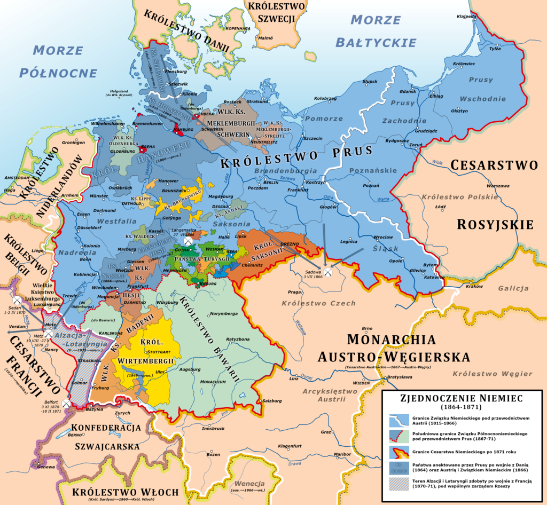
First, although he was a thoroughly conservative man, he embraced plans for German unification that had previously been associated with left-wing revolutionaries. In implementing them - as chancellor of Prussia - he provoked three wars. In the first, in alliance with Austria, he defeated Denmark. Then he defeated Berlin's main rival for German unification - Austria. Finally, in 1870, he defeated France, the last obstacle to German unification. The whole endeavor was a balancing act. For Bismarck was pushing for a complete change in the balance of power in Europe, creating a power at the heart of Europe with the potential to become more powerful than all the others. This meant the great risk that all the others would form an alliance against Prussia and the Chancellor, as they had once done against Napoleon Bonaparte's France.
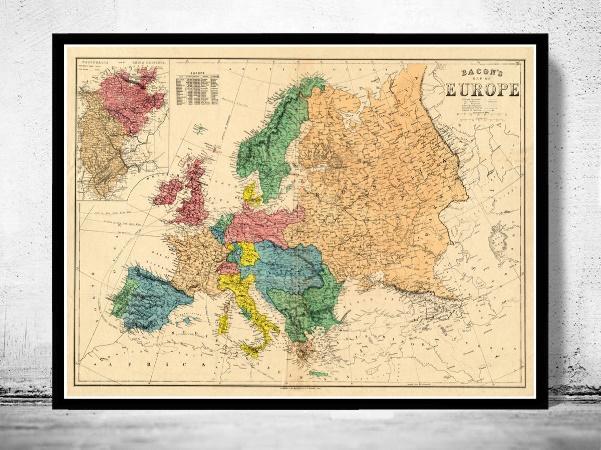
The mastery of the game consisted in ensnaring successive victims, leaving them without allies, and at the same time keeping Great Britain and Russia in neutrality, bribing them with ad hoc benefits. The two powers, which had defeated Bonaparte and could thwart any plans by entangling Prussia, allowed themselves to be manipulated. Politics was played exactly as the gambler Bismarck wanted, and changed the balance of power on the Old Continent. His success gave the Germans great self-confidence and the illusion that taking great risks was worthwhile because it offered the chance to reap equally great rewards.
It should be noted that when the Second Reich was founded under the auspices of Prussia in 1871, its industry produced 6 percent of the world's total output, lagging far behind Britain's, which had as much as 40 percent. However, the economic protectionism that Bismarck offered the German states, backed by a huge injection of 5 billion French francs in gold forced on France as a war contribution, began to bear fruit. Today it would be an estimated $200 billion.
This huge capital was pumped into the German economy through investment banks, known as gründer banks, and using government contracts. In just three years, some 900 new companies, mostly in industrial production, appeared on the Berlin stock exchange. Private investors built 20,000 kilometers of railroads in Germany, binding the newly formed country together. The iron roads of the Second Reich were no longer inferior in quality or density to English connections.
On the other hand, in order for the German mark to compete effectively with the British pound in the financial markets, Bismarck introduced gold parity. This immediately made the German currency a money worthy of the highest confidence.
However, it was not the gold contribution extracted from France that proved to be the Second Reich's greatest asset, but its own industrial elite, which was increasingly committed to building the country's power. It was they who initiated the second industrial revolution, during which the fatherland of the first, Great Britain, began to lose its edge as the world's greatest economic power.
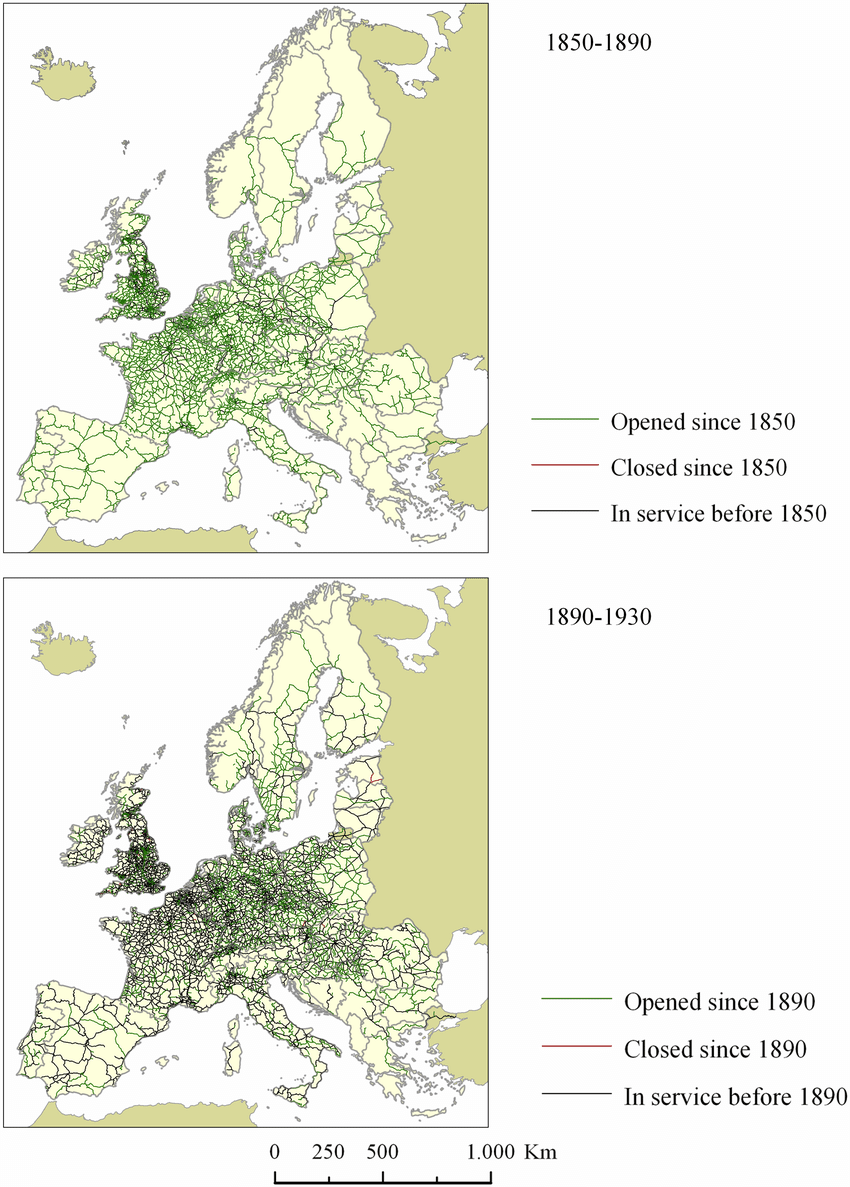
The four-stroke engine designed by Nicolaus Augustus Otto, commonly called the "Otto type," conquered European markets. Founded in 1864 in Cologne, Germany Otto & Co. produced barely 500 of them in 1871, but had to turn down as many as 2,000 orders. When Gottlieb Daimler and Wilhelm Maybach became directors, the Deutz factory - relocated to the outskirts of Cologne - became a major supplier of four-stroke gasoline and diesel engines for the entire continent. Not surprisingly, because until 1895, not a single engine produced by Deutz was returned to the factory due to complaints.
But they would not have found so many buyers had the automobile not been born. The first designer to build a vehicle worthy of the name was Karl Benz.
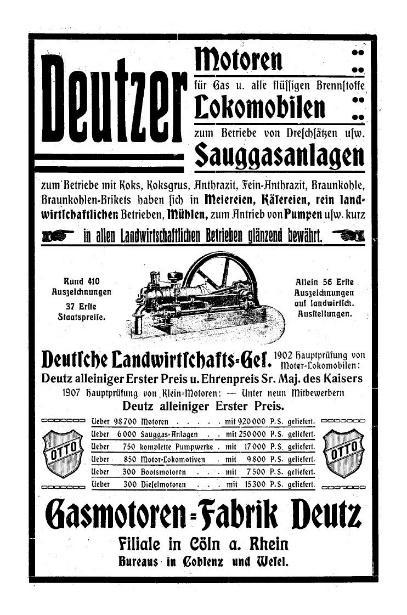
In October 1885, the first working automobile stood in the yard of the Benz factory in Mannheim. The test drive ended when it crashed into a wall. As the local press reported on July 3, 1886, after the car was repaired, Benz drove it one kilometer at an average speed of 11 kilometers per hour. The German automobile industry was born. Barely a decade later, Benz's car factories were producing 135 different types of cars a year, competing with another German car company, Daimler Motoren-Gesellschaft.

The development of Siemens AG was equally turbulent. Generously supported by government contracts, it electrified all of Germany, wired it with a network of telegraph lines, and offered electric-powered trolley buses, trams, and trains.

The warmest friendship in the Second Reich, however, blossomed between Chancellor Bismarck and the Krupp Corporation. In the days of bronze-cast cannons, Alfred Krupp began producing cannons from extremely resistant steel.
The quality of Krupp's steel was recognized by the Prussian chief of staff, Helmuth von Moltke, and before the wars for German unification began, he armed the entire Prussian army with cannons made in Essen. During the decisive battle with France at Sedan, they fired twice as fast and accurately as the French, massacring Napoleon III's troops. The Emperor, taken prisoner, was later brought before the Prussian King Wilhelm I. Napoleon III began his conversation with the words, "I congratulate you on your army and especially on your artillery.” Shortly thereafter, William I became Emperor of Germany and wanted to thank Krupp for his inventions. At first he offered the industrialist a title of nobility. But Krupp refused to accept the prefix "von", saying simply: ”Krupp das genügt” - "Krupp is enough". Being an aristocrat did not impress the industrialist, with whom the governments of literally every country wanted to sign contracts. These were the beginnings of the most powerful industrial group in Europe at the end of the 19th century. It became not only the largest producer of modern armaments, but also of steel products necessary for the construction of ships, locomotives and automobiles, and indispensable for all construction projects.

The expansion of German corporations grew rapidly. It was driven by the fact that in the Second Reich there was a rare combination of the cult of science and innovation, comparable only to a similar phenomenon in the United States, with that promoted by Prussia: discipline, diligence, and obedience to superiors. The German worker worked efficiently, the directors were wholeheartedly devoted to their companies, and the owners cared about production quality and innovation. The six largest German corporations, including Krupp and Siemens, employed 650 scientists in their laboratories. In Britain, 40 scientists worked for the entire industry at the end of the 19th century. As a result, the twilight of British economic dominance came remarkably quickly. By the end of the century, Krupp's company was offering the world’s best "Maxime" machine guns and the most resistant armor plates. The laboratory of Bayer & Co. in Leverkusen, Germany, produced drugs that sold brilliantly in every country: aspirin and .... heroin, as well as many innovative drugs. Neither Britain nor France could keep up with Germany in the scientific race to produce innovations. So they lost out economically.
As a result, by 1900 British industry no longer had a fourfold advantage over German industry. According to statistics, Britain produced 19.5 percent of the world's industrial output at the time, Germany 16.6 percent, and France lagged far behind with 6.4 percent. At the same time, the rate of development clearly indicated that a decade would be enough for the Second Reich to have an economy stronger than Britain's. Although the Americans were already dominant in this field, providing the world with as much as 35 percent of total industrial production, but the US was on the other side of the Atlantic pond..
"The capital power of the German Empire was growing so fast that it was not enough space at home. As early as the 1880s, German investments abroad began on a large scale. Between 1883 and 1914 they increased fivefold and reached 30 billion marks in 1913 (with 5 billion marks of foreign investments in Germany)" - this is how Czaplinski, Galos and Korta describe the next step in the expansion of the youngest of the European powers in a book: "German History".
A belated global power
While Great Britain and its companies invested mainly in British overseas territories (about 50 percent of the investments) and France in Russia and its colonies, the main direction of expansion for the corporations of the Second Reich was Austria-Hungary, the Balkans, Turkey, and the Middle East. At the beginning of the 20th century, it took only three decades for Vienna, Budapest, Istanbul, and Bucharest to become financial subjectates of Berlin. Because of commercial and economic dependence, the governments there were condemned to an alliance with the Second Reich, regardless of their own strategic interests.
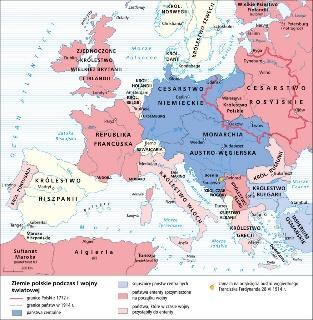
At that time, it became clear that the greatest curse of Bismarck's legacy was success that came too fast and too big. The Germans blindly believed in their power and began to dream of a new division of the world, not accepting that the Far East and Africa should be dominated only by Britain and France. The pragmatic Bismarck saw these ideas of colonial expansion as dangerous to the future of the Second Reich. They threatened to unite Germany's greatest competitors against it. But in 1888, a young and ambitious William II ascended the imperial throne. The grandson of Britain's Queen Victoria, he dreamed of creating an empire as great as the one his grandmother had ruled. The old chancellor tried to dissuade the emperor from his suicidal dream. The emperor then forced him to resign. Instead of waiting patiently for the Second Reich to become a dominant country on the European continent on its own through economic development, he preferred to take a shortcut with the full approval of the power elite. Even if it meant taking a risk.
The Germans felt emboldened, especially in creating new technologies. No wonder. Between 1901 and 1914, 14 of the 42 Nobel Prizes in the sciences were awarded to Germans, or about 30 percent. The scientific potential of the Second Reich was greater than that of the French and British combined. It even surpassed that of the Americans. In November 1909, as the rest of the world was just testing the first flying machines, Ferdinand von Zeppelin announced the establishment of a first passenger airline, Deutsche Luftschiffahrts Aktien-Gesellschaft.
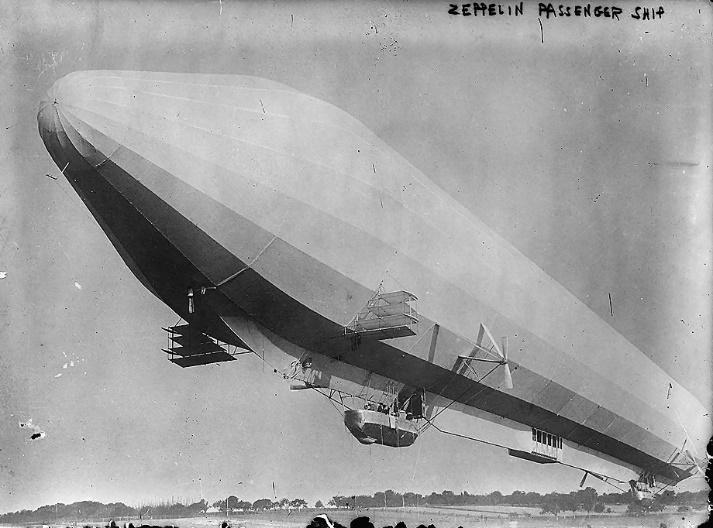
DELAG carried the first 20,000 passengers free of charge, thus promoting the fashion for air travel, but for the next it offered tickets for 200 marks each. This was the average monthly income in Germany at the time. Nevertheless, the flights became increasingly popular. Aboard DELAG's 12 airships, which served routes between the ten largest cities of the Second Reich, passengers could travel in the company of aristocrats, politicians, millionaires, generals, and even members of the imperial family. This added glamour to the lines. In August 1914, they boasted a total of more than 34,000 passengers, none of whom died during the flight. At the time, no other country had a similar passenger airline.
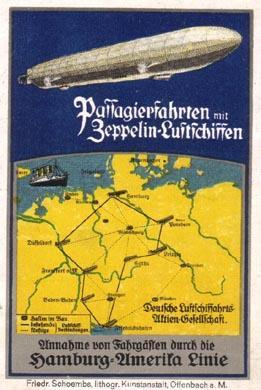
"There was a widespread belief in Germany in the tremendous capabilities of airships, so much so that the army and navy were given permission to build their own fleets of powerful aerostats," notes Walter J. Boyne in his book Wings of War.
The same was true for submarines. When the Reichstag passed the Fleet Act in June 1900, openly challenging Great Britain, German shipyards undertook to build 38 battleships and 52 cruisers, plus more than two hundred auxiliary vessels. But Britain took up the gauntlet. In no time, the super battleship "HMS Dreadnought", armed with 10 main guns of 305 mm caliber, was designed and launched in Great Britain. By the time it was commissioned in late 1906, British shipyards were already building more. And so Admiral Alfred Tirpitz, Secretary of State for the German Navy, approved a program to develop another innovative armament: German submarine - “Das U-Boot”. Tirpitz saw them as a “wunderwaffe” (wonder weapon) whose combat capabilities could offset the advantage of the Royal Navy, which was still the most powerful in the world.
This phenomenon happened in every area. Whenever the Germans were unable to gain a decisive advantage over their rivals, they resorted to innovation. They looked for a panacea in new technologies. Often with success.
Nevertheless, the decision to go to war with rival powers carried enormous risks, as the strategic situation of the Second Reich reduced the strength of all the assets Berlin possessed. Even if they were technologically ahead of their time.
Britain could count on a powerful navy, colonies and trade with the United States. France also on colonies, and on Britain and Russia, with which it was bound by a military alliance called - "entente". Russia on its natural resources and vast territory, creating strategic depth that Napoleon Bonaparte was defeated by a century earlier.
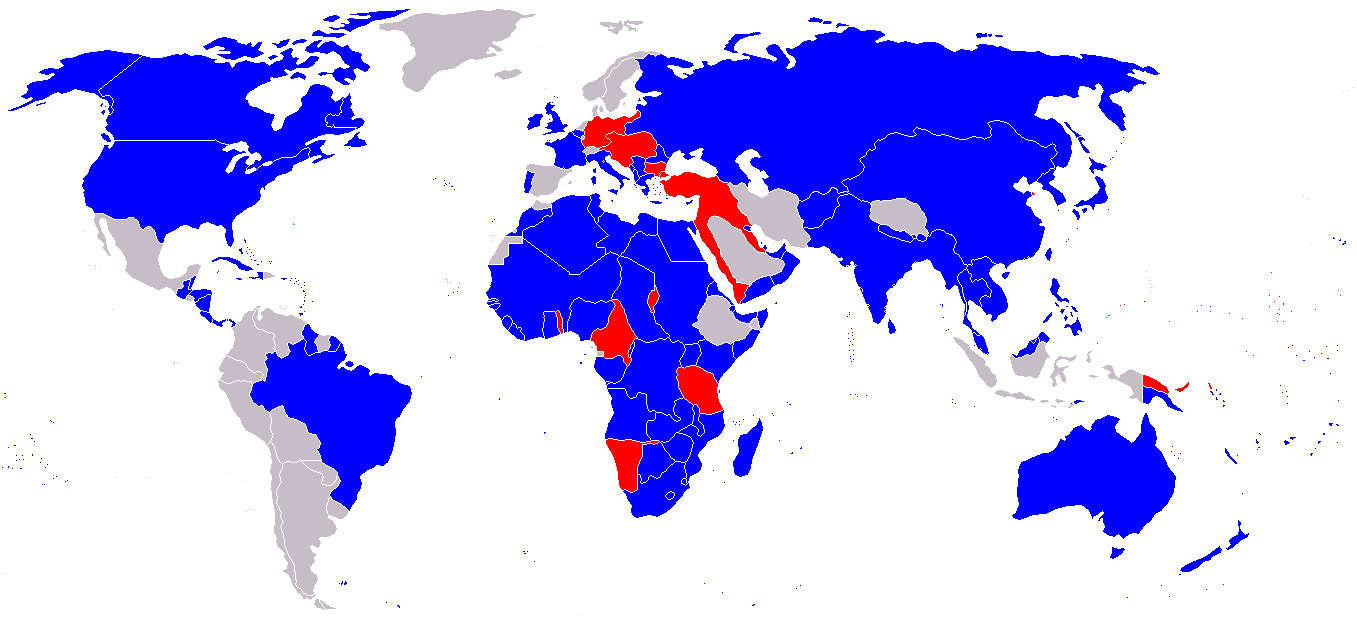
Germany, on the other hand, encircled by the Entente, was immediately in a desperate situation. Its only significant ally, Austria-Hungary, was more of a liability than an asset. That's why Berlin's war planning immediately turned to a gamble. That’s how we could describe the campaign plan drawn up by Field Marshal Alfred von Schlieffen. It called for the crushing of France within six weeks of the mobilization of the German Army, and then to turn all forces against Russia and end the war in three months. After the defeat of the Allies, a stranded Great Britain would have to agree to peace negotiations - at least that was the vision. The risk of gambling was compounded by the fact that Berlin had not developed a Plan B in case the Schlieffen Plan failed.
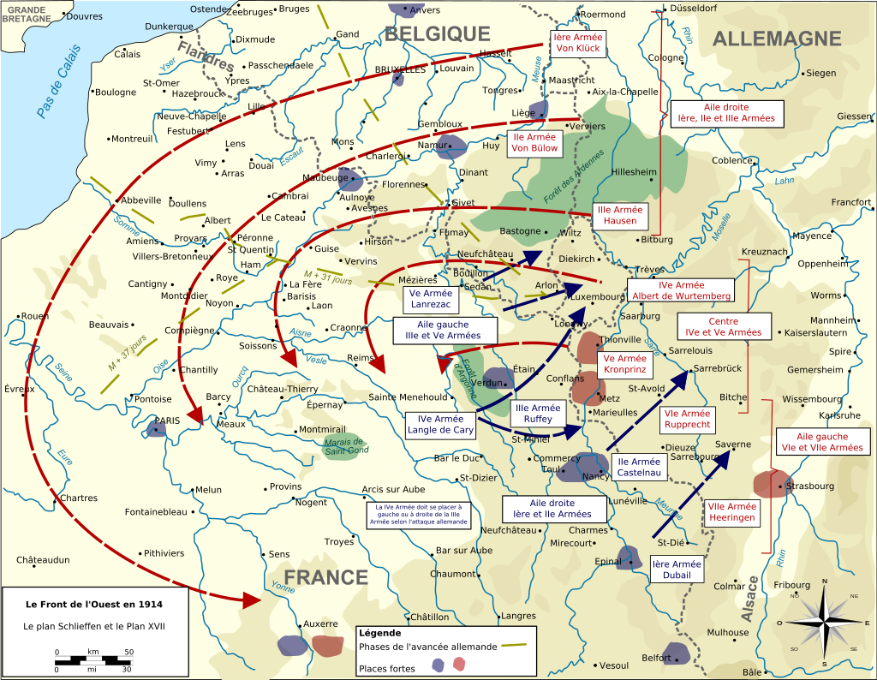
"Germany had not planned for a long war, and when it began it had a supply of nitrate for gunpowder production sufficient for six months at most, and not a ounce more," points out Barbara Tuchman in her monumental monograph, "The Guns of August" which chronicles the beginning of the First World War.
The raw material for the production of ammonium gunpowder, necessary for firing rifle bullets and cannon shells, was imported from Chilean mines! Cutting off Germany's supply of saltpeter from South America was not a major problem for the British Navy. Literally no one in the German Staff considered the possibility that a war fought simultaneously with Britain, France and Russia would last longer than 6 months and would not end in victory for the Second Reich. They put the entire future of Germany on one card, and like gamblers blinded by confidence in their own abilities and a lucky star, they lost. But by a narrow margin.
In early September 1914, General Alexander von Kluck's army crushed the Anglo-French forces, opening the way to the French capital. The fall of Paris offered a chance for a quick victory as in 1870, but constant fighting, marching, and lack of supplies exhausted von Kluck's troops. A plan to attack their wing was quickly hatched at French headquarters. Reinforcements were hastily brought to Paris by train. But the troops had to reach the concentration point as quickly as possible and strike before the Germans replenished their losses. Then the governor of the French capital, General Joseph-Simon Gallieni, came up with the brilliant idea of using taxis to transport troops.
"The order was issued at 1 p.m. for departure at 6 p.m. The police passed it on to the taxi drivers as they drove through the streets. The drivers enthusiastically unloaded their passengers, proudly declaring that they were 'going to battle'" - Barbara Tuchman recalls. They managed to transport the 12,000-strong corps across the Marne. A surprise attack on the wing of von Kluck's troops not only stopped the offensive, but forced the Germans to retreat. Ironically, Germany lost because of its own creation - the automobile!
Lightning warfare became positional warfare, and it was the power of artillery and machine guns that determined which side would gain the upper hand. Without the saltpeter substitute, the Second Reich would have surrendered before the summer of 1915. It survived much longer because of its scientists and their ability to develop breakthrough technologies. In the early 20th century, prominent chemist Fritz Haber saved Europe from an expected famine due to land depletion. In 1904, he built a reactor in which hydrogen and nitrogen were mixed to form ammonia. After the technology was refined thanks to BASF's interest, the first ammonia plant went into operation in Ludwigshafen in 1913. A year later, Fritz Haber personally proposed to the German government that synthetic ammonia be used to make gunpowder. Shortly thereafter, he offered formulas for war gases and equipment to produce them. He was also the inventor of the tragically infamous Zyklon B, which, more than 20 years after its invention, was used to kill more than a million prisoners at the German concentration camp KL Auschwitz. Ironically, Haber himself, was forced to emigrate from Germany in 1933 because of his Jewish ancestry.
But coming back to the first world war, thanks to Haber and the ammonia factories, the Second Reich was able to maintain the production of gunpowder and explosives through the next years of the war. During this time, the word "ersatz" gained popularity in Germany. It meant a substitute for a product that had been widely available before 1914. With ersatz, it was possible to provide civilians with access to the most sought-after goods.
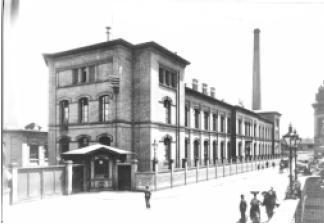
German scholars have shown remarkable creativity in creating new substitutes. Political activist and Reichstag delegate Marie-Elisabeth Lüders, in her monograph "The Unknown Army” calculated that some 11,000 substitutes were created in Germany to cope with the British naval blockade. Of these, the largest number were more than 6,000 substitutes of wine, beer, and soda pretending to be pre-war products.
In the case of tea, ersatz was made from roasted barley combined with flower petals, field flowers, raspberry leaves, and catnip. Butter disappeared from store shelves as cow population dwindled. It was also around this time that German chemist Wilhelm Normann proposed his invention - a vegetable fat called margarine - as a substitute. Even more ingenuity was used to replace meat. Over a 1000 products that imitated its appearance and taste and were a mixture of some plants with chemicals, were created.
New technologies and substitutes allowed the Second Reich to delay the seemingly inevitable defeat for a very long time. As revolution broke out in Russia, and France and Great Britain were on the verge of collapsing from the number of fallen and injured soldiers, it seemed that German innovation might once again save von Hindeburg's troops.

It was not until the United States sent its troops to the Old Continent that the balance was tipped. Those who could not be replaced by any substitute or ersatz were soldiers. The Germans began to run out of men capable of carrying weapons. In addition, those who had not yet fallen rebelled. However, the ability to continue fighting was also crippled by the lack of fuel for motor vehicles and the depletion of supplies of ... lubricants. Without these, no engine, be it a truck or a steam locomotive, could function. The possibilities for all kinds of transportation and even for dragging guns over long distances were running out. After 1914, German industry succeeded in replacing natural rubber with a substitute. The isoprene polymerization technology developed by Fritz Hofmann made it possible to produce synthetic rubber on an industrial scale. However, the Second Reich could not find a recipe for being cut off from the oil fields.
So, although the German initial plan failed in 1914, it kept its hopes of turning the tide alive until 1918, thanks to its strong belief into ever-new technologies. It was largely an illusion, but it was believed in so strongly that Germans were destined to make the same mistake, again.
Less than fifteen years after the defeat, Adolf Hitler became Chancellor of Germany and immediately embarked on a further gambit in which he repeatedly put the country's future on one card. Beginning with the remilitarization of the Rhineland in March 1936, in which Wermacht troops invaded in defiance of the Treaty of Versailles.
"The 48 hours after our troops marched in were the most nerve-wracking hours of my life. If the French had also invaded the Rhineland, we would have had to retreat with our tails between our legs," the Führer later recalled. Indeed, despite the restoration of military power, Germany's position was no better than it had been in 1914. Its only serious ally in Europe, Fascist Italy, was proving more of a nuisance than a support. On the other hand, the "Achilles' heel” was no longer saltpeter, but oil. Without access to its vast sources, the threat of a lack of controllable liquid fuel supplies constantly hung over the army, which based its strength on a blitzkrieg strategy and thus on the coordinated use of mechanized bridges and aviation. Without oil, any plans of Hitler were just a pipe dream.
But stronger than the fears was the confidence in new technologies. Even before the outbreak of World War I, Prof. Friedrich Bergius in his laboratory in Hanover, Germany, developed a method for producing synthetic gasoline from lignite.
It wasn't until the defeat in 1918 that Prof. Bergius' innovative technology became known to the public. The patent protecting it was bought by I.G. Farben. The company then hired the inventor to personally lead further research. In 1927, the world's first synthetic gasoline plant went into operation near Mannheim, Germany.

A little earlier, two other German scientists, Franc Fischer and Hans Tropsch, had developed an alternative technology for producing liquid fuels from carbon monoxide (CO) by saturating it with hydrogen. In doing so, the inventors unwittingly contributed to the likelihood of another world war.
Ten years later, on Hitler's orders, Hermann Göring took charge of the production of synthetic fuels in Germany as head of the Raw Materials and Equipment Staff in April 1936. Under his supervision, economists and business leaders developed the Four-Year Plan, which laid the foundation for the future war economy. Up to 20 percent of the plan's expenditures were earmarked for the expansion of the chemical industry. The primary goal was to make the Third Reich independent of oil imports. Each chemical corporations also had to set aside funds to develop new technologies for fuel production. "Huge sums of money were allocated for research. In the period between 1932 and 1943, I.G. Farben spent on that purpose more than 1 billion Reichsmarks." - reported a special U.S. congressional report on the activities of I.G. Farben, prepared in 1945.
Even before the invasion of Poland in 1939, seven large synthetic-fuel plants using the Bergius process had been built, and another seven using Fischer-Tropsch technology. With the outbreak of the Second World War, the Germans continued to expand their syhtethic fuel industrial base.
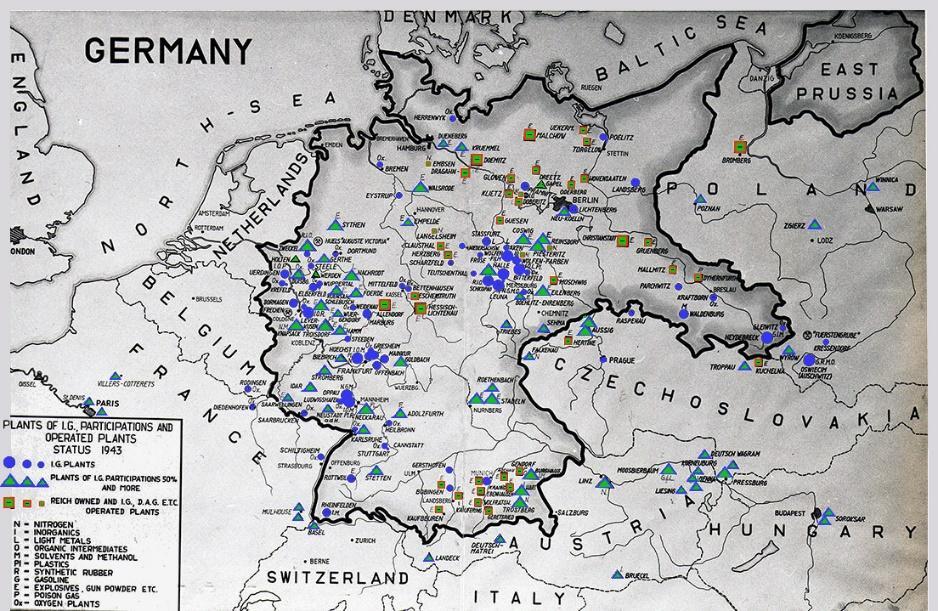
Basing the German war machine on an innovative chemical industry that had no equivalent in the world proved safe as long as it was able to carry out rapid military campaigns. Hitler's gamble to strike Poland in the fall of 1939, with France and Britain behind him, was stunningly successful. But success was further guaranteed by a pact with Stalin known as the Ribbentrop-Molotov Pact. Thanks to it, the strike on France in 1940 was also seamlessly successful. The German army was then supplied with fuel not only by the chemical industry, but also by the Soviet Union.
After so many gambling successes in June 1941. Hitler played va banque again by striking the USSR. Only then it became apparent that the fuel needs of the Third Reich's armed forces were as great at the Russian strategic depth. The capabilities of the German chemical industry were simply insufficient, and Germany was doomed.
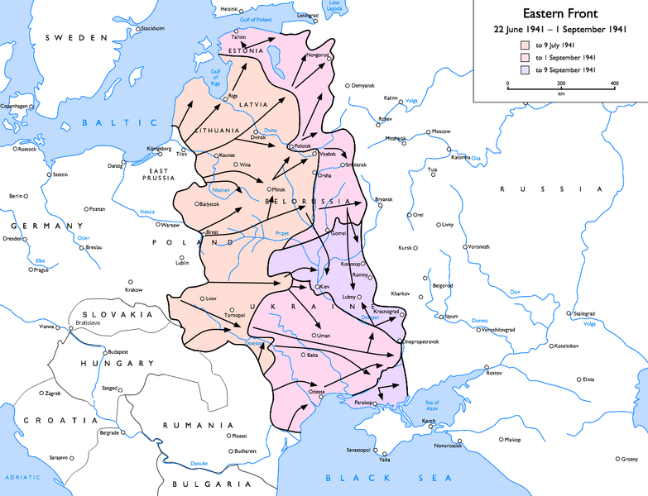
However, it was only after the defeat at Moscow in December 1941 that Hitler realized that this time the great military operation would not be as short as the previous ones.
Thus, in 1942, an offensive was launched only in the south of the USSR to conquer Transcaucasia and seize the oil fields around Baku. But it failed. The last nail in the coffin of the Third Reich became the great bombing offensive of the US 8th Air Army, launched in May 1944. Despite attempts to scatter liquid fuel factories and hide them in mountain ravines, the U.S. Air Force effectively reduced the production capacity of the German chemical industry.
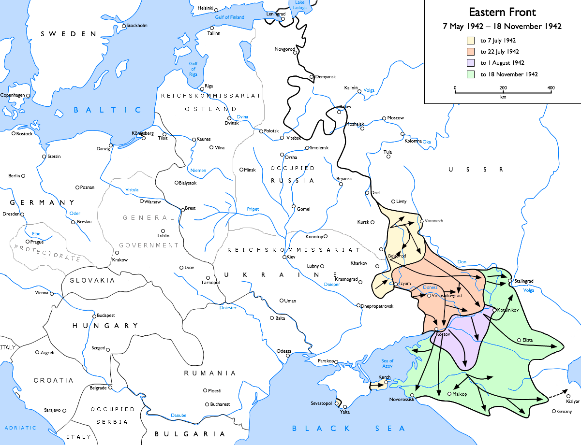
"In October 1944 we reached 10 percent of our former production capacity," said Reich Minister of Armaments and Munitions Albert Speer in his memoirs. As a result, the German army lost its ability to conduct large-scale offensives. When the "Last Chance" offensive in the Ardennes was being prepared in December 1944, despite maximum mobilization of the chemical industry, it was only possible to stockpile propellants for the first week of fighting. German armored divisions were to capture Allied fuel depots. When this failed, the last spark of hope for the survival of the Third Reich was extinguished.
As always with compulsive gamblers, it was not the gambler who won, but the casino. Nor Germany was saved by the next wunderwaffe or "wonder weapon". Although before 1945 German engineers were ahead of their time in ways that baffled the Allies. The long list of cutting-edge weapons, each of which represented a major technological breakthrough, included flying V-1 bombs that could aim themselves thanks to a gyroscopic autopilot, V-2 ballistic missiles, jet-powered Messerschmitt Me 262 fighters, and rocket-powered Messerschmitt Me 163 fighters.
Each of these weapons had the potential to inflict massive casualties on the enemy. But first, the prototypes had to be refined to make them reliable and ready for mass production. In addition, the high-tech weapons had to be supplied with an unlimited supply of fuel. None of these conditions could be sufficiently met, so the gamble was doomed to failure.
Final results
In summary, after the first gambit for global superpower status, World War I, Germany lost 13 percent of its territory in Europe (about 43,000 square kilometers) and about 4.5 million square kilometers of territory belonging to its colonies in Africa and the Pacific. Human losses were about 2.1 million Germans killed.
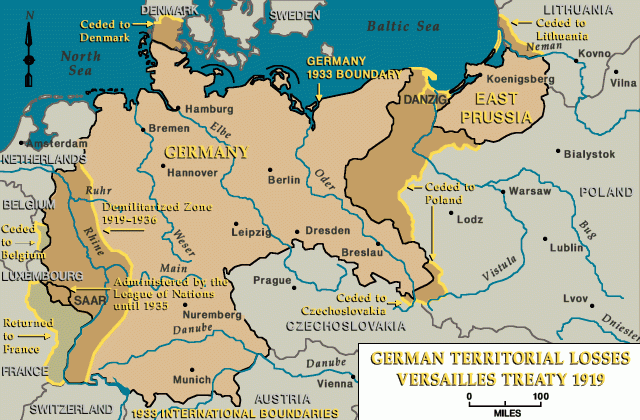

After the second gamble to become a global superpower, Germany lost another 24 percent of its territory (about 111,765 square kilometers) compared to what it had before the annexation of Austria in 1938, with human losses ranging from about 7 to 8.8 million dead, according to various estimates.
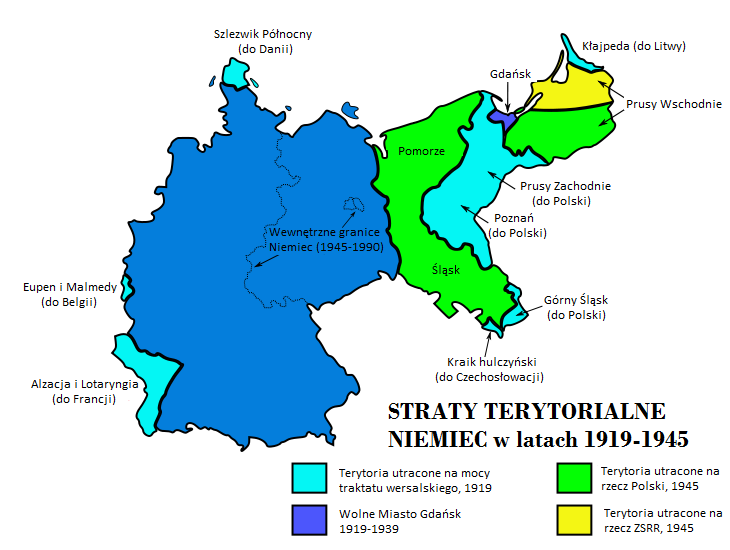
This was accompanied by massive war damage and the division of Germany into two states, with East Germany completely subordinated to the Soviet Union and West Germany under the protectorate of the United States.
Thus, the double attempt to repeat the Bismarckian poker game in order to establish a new order, but no longer on a European but on a global scale, resulted in the squandering of the Iron Chancellor's achievements. Even the work of German unification was wasted. The end result cured the Germans of their gambling tendencies for a long time. Even in the first decade after the reunification of the German state in 1990, there were no signs that they wanted to return to their old habits.
Recovery from addiction
The fact that the Federal Republic had become a model democracy and at the same time a key member of the European Union seemed a sufficient safeguard against German tendencies to take excessive risks. Faith in the Union and German democracy proved so strong that when Berlin went back to gambling, not even the Germans themselves noticed.
Only in retrospect can it be seen that it was Germany's Eastern policy, initiated by Chancellor Gerhard Schröder and conducted under the slogan "change through trade" or “wandel durch handel” that was responsible. Initially, the Chancellor's actions raised some objections in the media and among politicians, mainly due to the fact that respect for human rights and democratic principles is not Vladimir Putin's strong point. Especially when he was pacifying Chechnya and sending more of his political opponents to prison. Or they died under very unclear circumstances.
"For Schröder, Putin is simply an 'impeccable democrat'. - stated in the pages of "Deutsche Welle" on May 4, 2005. Sonia Phalnikar. Informing also that: "Russia is one of the Chancellor's favorite destinations; Berlin's economic relations with Moscow are developing dynamically, as are the personal relations between Gerhard Schröder and Vladimir Putin." But as Sonia Phalnikar points out: "It is not only human rights organizations that are concerned about Schröder's tendency to notoriously ignore democratic deficits and legal abuses whenever there is an economic advantage. Members of his own party and the party of his 'green partner' in the coalition are also sometimes very unhappy with Schröder's favorite principle 'market over morality'" - wrote Phalnikar.
These reservations began to fade, however, when Schröder offered the Greens in 2001 to implement the elements of the party's electoral agenda that were most important to them, first and foremost the phasing out of nuclear power plants. Gas-fired power plants with fuel from Russia were to fill the gap. Cheap Russian raw materials became a facilitator for the implementation of the Agenda 2010 reform package, with which Chancellor Schröder's cabinet intended to pull the German economy out of stagnation.
And it did. Access to Russian fuels and the benefits of the eurozone acted like a turbocharger on the German economy. After several years of stagnation, Germany almost doubled its exports, from 664 billion euros in 2001 to 965 billion in 2007. The author of this success secured a lavish reward for himself by accepting the position of chairman of the supervisory board of Nord Stream AG from Vladimir Putin.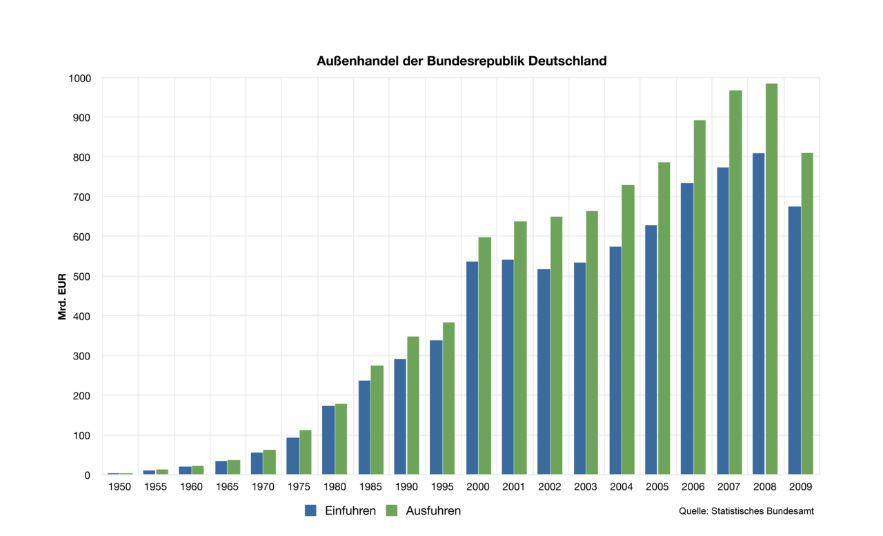
Although the SPD lost power to the CDU in 2005, its leader, Angela Merkel, continued Schröder's Ostpolitik, making Germany dependent on energy resources from Russia. The resulting economic benefits, allowed the chancellor to gain a dominant position in the European Union. Especially as the other key state in the community, France, was experiencing increasing economic breathlessness. While the French economy kept pace with Germany until the beginning of the 21st century, it began to fall behind in the middle of the first decade of the new century. This, in turn, meant that Chancellor Merkel increasingly had the last word in the EU forum.
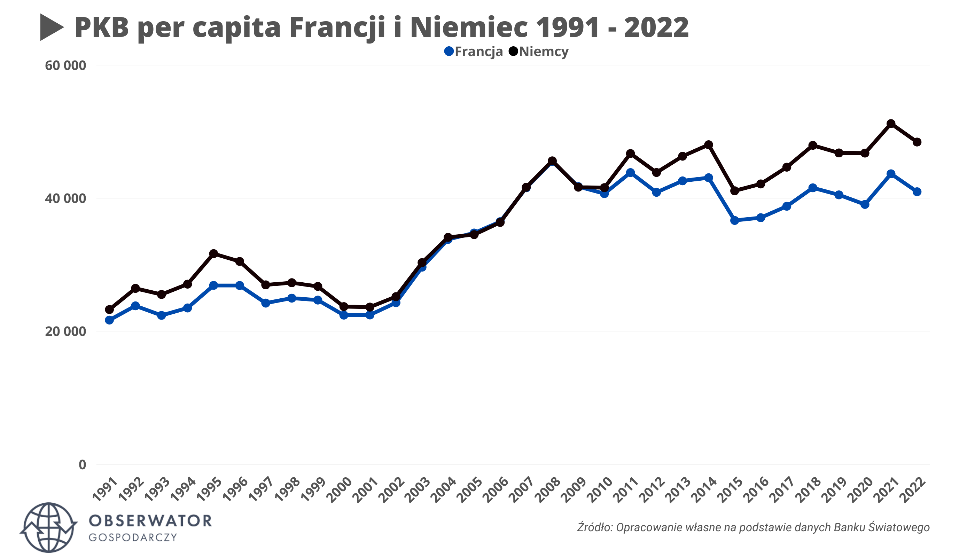
Cooperation with Russia therefore paid off more and more, as it strengthened Germany's position not only in Europe, but also in the world. This fact was also appreciated by US President Barack Obama, who offered Merkel the role of his strategic partner, even calling her his "closest ally" in Europe. In turn, she broke the resistance of the Central European countries that tried to block the construction of the two Nord Stream pipelines and convinced all of Western Europe of the necessity of their existence. Thanks to them, the great project of "energy transition" was to be possible. Berlin's ultimate goal was to base Germany's energy sector entirely on renewable sources. In this way, Germany wanted to overcome one of its greatest weaknesses, which for 150 years has always been the lack of access to the most necessary raw materials.
Achieving this goal would bring many strategic benefits to Germany. It would become a world leader in the fight against global warming, with an economy fully compatible with this challenge. Economically, it would become a supplier of the technology and equipment needed in other countries to make a similar transformation. At the same time, on the political front, a country that dominates the European Union.
By getting rid of nuclear power and doing everything possible to disgust all EU members of nuclear energy, Berlin was theoretically not to lose anything but gain new influence. The energy systems of the other EU members became more and more similar and compatible with Germany's. And during the transition period, Germany secured for itself the role of a major distributor of Russian gas in Europe. It was something like the energy core of the old continent, around which the new order in the Union would take shape.
Berlin's misfortune was that such a transformation model again turned out to be a gamble. Neither Angela Merkel nor her successors in the SPD-Green-FDP coalition took into account the possibility that Vladimir Putin would not be an honest partner, but a competitor. Moreover, his political goals will threaten German interests. Hundreds of warning signals that have appeared regularly since the beginning of the 21st century, including Putin's public statements, have always been ignored. Meanwhile, the Russian leader has made no secret of his desire to keep the countries created after the collapse of the USSR within the Kremlin's sphere of influence and to regain at least some of his influence in the Central European countries once vassalized by Moscow. He has already spoken about this in an address to the nation on April 25, 2005. And again in a speech in Munich in February 2007. Nevertheless, the German leaders remained deaf and blind to these threats and stuck to their plans for a great transformation until February 24, 2022, when Russian troops invaded Ukraine. At that point, everything went sour, and the German economy began to slide into a recession that lasted until 2023. Today, it is at best, stagnation. The successive financial support packages for industry prepared by the Olaf Scholz government are unable to break it.
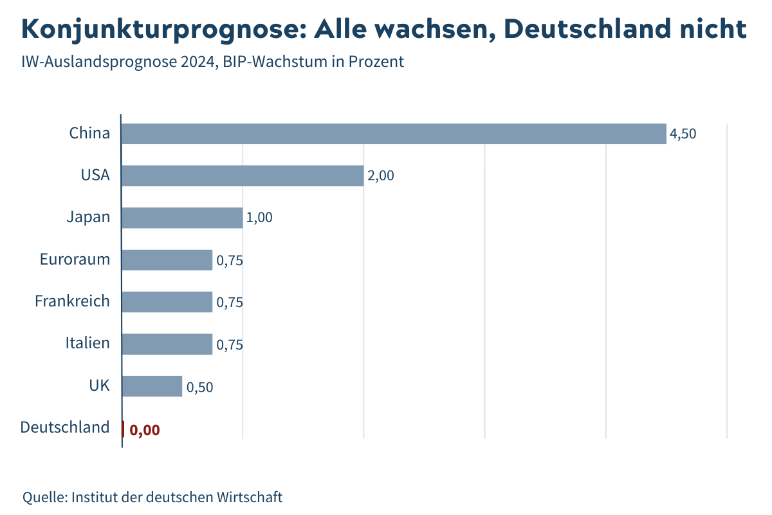
In the long run, such a state of affairs threatens to deprive Berlin of the dominant political and economic position in the Union that it achieved under Gerhard Schröder and Angela Merkel. This goes hand in hand with giving up the dream of being an independent global player and having to accept the growing importance of other large member states in the EU and the return of Paris to the role of an equal partner.
This process is already underway, as can be seen, for example, in the very assertive policy of Emmanuel Macron and his attempt to assume the role of political leader of the entire Union on the most pressing issues for it, such as the war in Ukraine.
Meanwhile, Germany is behaving…like it always does after realizing the failure of previous plans. It is acting like a compulsive gambler, betting its future on a very risky card, believing in the miraculous power of new technologies and hydrogen.
Hydrogen the new ersatz or wunderwaffe?
"The Bundestag today passed the second law amending the Energy Industry Act (EnWG). It creates the legal framework for the second phase of hydrogen network expansion by introducing comprehensive integrated planning for the development of the natural gas network and the future hydrogen transport network" - said a press release issued by the German Parliament on April 12, 2024. Thanks to the new law, the construction of a "hydrogen core network" will begin in Germany, for the creation of which the government will allocate more than 20 billion euros.
The plan is to have a network of 9,700 kilometers of hydrogen pipelines in operation by 2032.
Kerstin Andreae, Managing Director of the German Energy Association (BDEW), said: "The development of the hydrogen core network is an important component of the energy transition and economic transformation".
The planned core network will connect hydrogen-exporting facilities with major industrial centers, power plants, strategic hydrogen storage facilities, and "import corridors" that are also planned. Indeed, Berlin expects the new model for Germany's energy transition to be adopted by neighboring countries and even the rest of the EU.
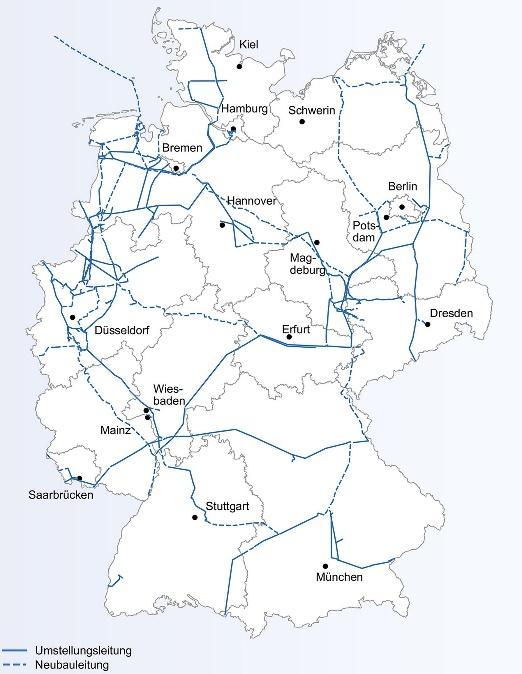
One day before that, on April 11, 2024, the European Parliament adopted a legislative package to carry out a gradual conversion of the European gas market and pipeline infrastructure to hydrogen. According to the package, in the future gas will cease to be the fuel used within the Union and its place will be taken by hydrogen "green fuel". The planned network of "hydrogen pipelines" will be supervised by a new institution, the European Hydrogen Network Operators (ENNOH), and from 2028 it will be charged with designing the development of the network. It should be noted that the country which, thanks to the measures already taken, is emerging as a major contributor to the EU pipeline network supervised by this authority (ENNOH) is Germany.
At first glance, this flight of Berlin after the defeat it suffered at the hands of Putin seems to have nothing to do with gambling. Instead, it inspires respect for its ability to make long-term strategic plans. Everything is spoiled by one aspect - hydrogen itself.
This most abundant element in the universe has not just recently been touted as the fuel of the future. Such visions were already floated shortly after ... the first reunification of Germany.
In his novel "The Mysterious Island," published in 1874, Jules Verne prophesied: "The day will come when hydrogen and oxygen, which together form water, will be used as an inexhaustible source of heat and light." To scientists at the time, it seemed that a great enthusiast of technological progress like the French writer had hit the nail on the head with his prediction. As chemistry developed, hydrogen became more and more available. It was easily extracted not only from water, but also from gas and oil, while its combustibility seemed to make it an excellent fuel. Especially since the calorific value of hydrogen is very high at 120 MJ (megajoules) per kilogram, compared to 25 MJ/kg for coal and 47 MJ/kg for gasoline.
But, it quickly turned out that tiny hydrogen atoms can penetrate even very thick tank walls. They diffuse easily through rubber, porous materials and, at elevated temperatures, through steel. And the more hydrogen was compressed, the more easily it escaped from theoretically airtight places. Because of these disadvantages, it was not used as a fuel until the age of space travel, in rockets. For example, it was used to power the Apollo spacecraft.
Thanks to the fact that the United States decided to send a man to the Silver Globe and did not hesitate to spend money on it, special tank technologies were developed for the safe storage of hydrogen. In the following decades, however, the technology from the "Apollo" program still could not be used on a large scale because of the costs. This factor continued to make hydrogen fuel unprofitable. Especially when it had to compete with fossil fuels. Purchase costs, transportation costs, storage costs with the risk of gas escaping from the tank were killing every nitrogen endeavour. These were the reasons why the Toyota Mirai, the first mass-produced car with an electric motor powered by a hydrogen fuel cell, failed to achieve market success for 10 years. The cost of building a station to refuel such a car is about $2 million. They require great attention to the quality of every component to prevent hydrogen "leakage" and adherence to strict safety procedures. While consumers won't buy a car they can't refuel conveniently wherever they go.
But these are trifles in the face of the challenge Germany is taking on by betting its future on hydrogen. Nowhere in the world is hydrogen being used as a fuel on a large scale, so Germany is taking on the role of pioneer. This means dealing with a large number of predictable and unpredictable factors. Scientists will have to overcome them within this decade - a situation that, in retrospect, their predecessors in the 20th century were familiar with. Berlin is going "all in" on hydrogen, hoping that the venture will pay off quickly and break through the current energy quagmire that is choking the German economy. But, the challenge is enormous.
Let's start with the fact that hydrogen has a high energy value per unit mass, but a low energy density per unit volume, because it is a gas and the smallest of the elements. So it requires either huge sealed tanks, pressurized storage combined with some substance to absorb it, or liquefied at minus 254 degrees Celsius. Whatever you choose, the costs are high, and the technologies are still being developed and perfected. On a massive scale, the risk of failure increases in direct proportion to scale. The network of existing gas pipelines will either have to be upgraded to make them leak-proof for hydrogen properties, or replaced. Another cost.
Going further, there is the hydrogen production process itself. The current production capacity of the countries of the European Union is already considerable at 11.5 million tons per year. However, when it comes to so-called "green hydrogen", i.e. hydrogen produced from water without carbon dioxide emissions, the existing production capacity is only 20,000 tons!!! Instead of water, hydrogen is mainly produced from natural gas and possibly oil. This is accompanied by the emission of CO2 into the atmosphere, in amounts similar to what would be emitted if the said fossil fuels were conventionally used to power a power plant or an internal combustion engine. The only difference is that the final cost of energy production would be lower.
Why this is the case is explained in a report by US-based center Strategy&, a subsidiary of PwC. "Navigating the Global Hydrogen Ecosystem". From there, we’ll find out that the cost of producing a kilogram of "green hydrogen" from water is $6.38-7.98, while from gas it is $3.19-4.79. And that is after the price of capturing the carbon dioxide with a special device and then storing it underground.
Meanwhile, the EU's REPowerEU energy transition plan calls for "green hydrogen" production to increase to 10 million tons by 2030. According to calculations by Strategy&, this would require electrolysers to split water molecules into hydrogen and oxygen using 120 GW of electricity! That is half of the entire German energy production capacity. On the other hand, if you want to produce "green hydrogen" using renewables, one would need to power electrolyzers with a number of about 25,000 wind turbines. In the end, the fuel would still be many times more expensive than fossil fuels. Technological barriers are the main reason for this. Not only is the bond between water and oxygen extremely strong, so that breaking it requires a considerable amount of electricity, but to make matters worse, the electrolyzers currently in use require expensive materials that act as cathodes and anodes, as well as catalysts for the chemical reaction, in order for the electrolysis process to take place. These are mainly platinum and iridium. This multiplies the cost of manufacturing and using the device.
In order to make "green hydrogen" cheaper, further technological revolutions are needed to reduce the horrendous costs of its production. In the long term, this seems achievable, as innovative electrolyzer designs are emerging that successfully replace precious metals with nickel, copper, iron, and even organic compounds. However, these are prototype projects that need to be refined and improved. Meanwhile, they should in principle be in mass production within a month, if the great hydrogen transition planned by Berlin is to be a great success by the expected date.
So it's hard not to call it a gamble. If Germany's dependence on hydrogen for its future turns out to be a mistake, the country will have rigged itself with an energy system that guarantees the highest electricity prices in the world. And remember, we live in a time when electricity dominates our civilization. Without it, it ceases to function. Well, unless German scientists, as they did 100 years ago, take on the burden of keeping the country in the global race and develop methods, still unknown today, that will make hydrogen both a cheap and efficient source of energy. Today, however, it is - another poker game by the authorities in Berlin.
In the course of the next few years, we will find out whether another German gamble with new technologies will bring Germany an economic revival or another spectacular defeat. Unfortunately, the gambling of the still most powerful country in Europe does not happen in isolation. If Germany gambles itself into disaster, it will drag everyone around it down as well.
Sources:
- https://www.welt.de/wirtschaft/article250091914/Urteil-Habeck-Ministerium-muss-Interna-zum-Atomausstieg-offenlegen.html
- https://www.iea.org/reports/projected-costs-of-generating-electricity-2020
- https://www.dw.com/pl/ostatnie-dni-energii-atomowej-w-niemczech/a-65273248
- https://www.welt.de/wirtschaft/article250091914/Urteil-Habeck-Ministerium-muss-Interna-zum-Atomausstieg-offenlegen.html
- https://www.welt.de/wirtschaft/article250091914/Urteil-Habeck-Ministerium-muss-Interna-zum-Atomausstieg-offenlegen.html
- https://www.cicero.de/innenpolitik/robert-habeck-akten-atomkraftwerke-kernkraftwerke-klage-akw-laufzeit-atomausstieg
- https://www.stern.de/politik/deutschland/energiekrise--haben-die-gruenen-beim-atomausstieg-getaeuscht--34662948.html
- https://www.stern.de/politik/deutschland/energiekrise--haben-die-gruenen-beim-atomausstieg-getaeuscht--34662948.html
- https://pl.wikipedia.org/wiki/Druga_rewolucja_przemys%C5%82owa
- https://beztarcia.fuchs.com/people/nicolaus-august-otto-wynalazca-i-konstruktor-ktory-wyprzedzil-swoje-czasy/
- https://de.wikipedia.org/wiki/Deutz_AG
- https://de.wikipedia.org/wiki/Carl_Benz
- https://de.wikipedia.org/wiki/Siemens
- https://de.wikipedia.org/wiki/Alfred_Krupp
- https://journals.sagepub.com/doi/10.1177/09683445231193878
- Władysław Czapliński, Adam Galos i Wacław Kort, Historii Niemiec, wyd. Ossolineum 1990
- https://pl.wikipedia.org/wiki/Lista_laureat%C3%B3w_Nagrody_Nobla
- https://de.wikipedia.org/wiki/DELAG
- Walter J. Boyne, Skrzydła wojny, Warszawa 2011.
- https://www.usni.org/magazines/proceedings/1939/january/german-naval-strategy-world-war
- https://pl.wikipedia.org/wiki/Plan_Schlieffena
- Barbara W. Tuchman, Sierpniowe salwy, Warszawa 2014
- https://de.wikipedia.org/wiki/Fritz_Haber
- https://books.google.pl/books/about/Das_unbekannte_Heer.html?id=TPEsAQAAIAAJ&redir_esc=y
- https://de.wikipedia.org/wiki/Wilhelm_Normann
- https://ejournals.eu/czasopismo/prace-historyczne/artykul/aprowizacja-ludnosci-cywilnej-w-czasie-i-wojny-swiatowej-wojna-jako-katalizator-zmian-kultury-kulinarnej-w-europie
- https://www.dw.com/pl/rze%C5%9Bki-staruszek-sztuczny-kauczuk/a-5068118
- https://en.wikipedia.org/wiki/Friedrich_Bergius
- https://en.wikipedia.org/wiki/Bergius_process
- https://en.wikipedia.org/wiki/Fischer%E2%80%93Tropsch_process
- https://en.wikipedia.org/wiki/IG_Farben
- https://en.wikipedia.org/wiki/Case_Blue
- Albert Speer, Wspomnienia, Warszawa 1990
- https://www.statista.com/statistics/1086396/german-territorial-loss-treaty-versailles-modern-countries/
- https://en.wikipedia.org/wiki/Former_eastern_territories_of_Germany
- https://www.nationalww2museum.org/students-teachers/student-resources/research-starters/research-starters-worldwide-deaths-world-war
- https://www.dw.com/en/sonia-phalnikar/person-35931454
- https://www.deutschlandfunk.de/anti-atomkraft-bewegung-deutschland-chronik-100.html
- https://obserwatorgospodarczy.pl/2023/07/15/gospodarka-niemiec-oraz-francji-starcie-dwoch-rywali/
- https://www.dw.com/pl/obama-i-merkel-dzieje-nie%C5%82atwych-relacji/a-36418275
- https://wyborcza.pl/7,75248,2673790.html
- https://wiadomosci.onet.pl/politico/rosja-15-lat-temu-wladimir-putin-powiedzial-nam-kim-jest-naprawde-nikt-go-nie-sluchal/gkdkqqf
- https://www.dw.com/de/deutsche-wirtschaft-entgeht-rezession/a-68958474
- https://www.bmwk.de/Redaktion/DE/Pressemitteilungen/2024/04/20240412-gesetz-zur-wasserstoff-netzentwicklungsplanung.html
- https://www.mdr.de/nachrichten/deutschland/politik/wasserstoff-kernnetz-bundestag-102.html
- https://www.euractiv.de/section/energie/news/eu-parlament-verabschiedet-gesetze-fuer-wechsel-von-gas-zu-wasserstoff/
- Dariusz Wiącek, „Wodór jako paliwo przyszłości”, https://bibliotekanauki.pl/articles/311495.pdf
- https://airandspace.si.edu/collection-objects/fuel-cell-apollo/nasm_A19780288000
- https://venair.com/en/blog/articles/cost-h2-fuel-station
- https://portaldlaelektryka.pl/aktualnosci/technologie-magazynowania-wodoru-i-jego-pochodnych-2746.html
- https://observatory.clean-hydrogen.europa.eu/hydrogen-landscape/production-trade-and-cost/hydrogen-production
- https://www.euronews.com/business/2024/03/05/whats-stopping-europe-from-reaching-its-clean-hydrogen-goals
- https://www.strategyand.pwc.com/de/en/industries/energy-utilities/navigating-the-hydrogen-ecosystem.html
- https://www.hydrogeninsight.com/production/eu-is-not-even-close-to-being-on-track-to-meet-its-2030-green-hydrogen-targets-amid-slow-build-out-pwc/2-1-1630909
- https://pl.wikipedia.org/wiki/Lista_elektrowni_w_Polsce
- https://seshydrogen.com/en/electrolysis-green-hydrogen-production-process-and-areas-of-application/


